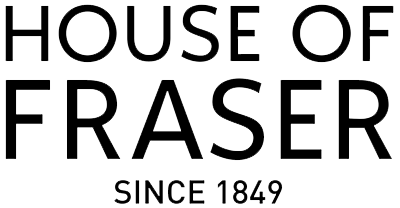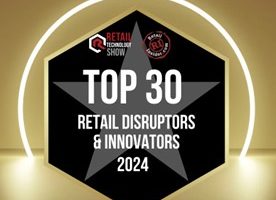The retail crisis on Britain’s high-streets is apparent as sales continue to slump, and shops close and jobs disappear. It’s therefore no surprise that the topic of business transformation is making a comeback as the saviour for UK retailers.
Aside from the traditional strategies of realigning people, processes and budgets, 2019 gives the opportunity for retailers to change outdated traditions and define a new vision for the future.
With that in mind, here are some key changes that retail businesses can make if they are to have a successful 2019.
Business to home
We’re all familiar with direct-to consumer (B2C) or business-to-business (B2B) models but a new trend is coming onto the scene: business-to-home.
Take the rise of the intelligent fridge for example, allowing customers to stock up on groceries from their smartphone. Indeed, the intelligent fridge is set to become popular in 2019, but business-to-home isn’t exclusive to kitchen appliances alone.
Consider the magic mirror, essentially a mirror computer that connects to fashion catalogues, beauty and jewellery products to allow the customer to select and filter by favourite brands and price.
The Business-to-home model is much like a rental service, in the above cases, a piece of furniture that exposes a product catalogue hat the customer can decide to switch off at any time.
The Omnipotent Omnichannel
As we dive into 2019, we’ll also see the digital centralisation business model gain traction. The customer being at the centre of all touchpoints is now a common industry standard, but once retailers achieve customer centricity, they need to face another challenge coming their way.
It involves merging store operations with ecommerce operations and the wholesale business (B2B) with the direct-to-customer business. In short, it’s the emergence of the omnichannel platform.
Wondering just how to do this? A centralised model for retail involves investment in digital transformation for new end-to-end processes such as:
- Deliver to delight – Developing services to better serve the customers
- Order to delivery – Making goods available as close as possible to the customer
- Route to market – Transforming sales and marketing omnichannel operations (in-store and online)
- Market to order – Driving conversion with expertise, intelligence and trust between customers and sales agents
Engaging with the consumers in this way is an opportunity for companies to form deeper connections focused on experiences and feelings that products are able evoke. It’s clear that the demand is there, and the technology is there to serve the promise, but how many businesses are actually implementing the strategy?
Retailers and the innovation proposition
Customers are demanding and expecting more than ever before – it’s not enough for retailers to have a unique selling proposition, instead, they need to come armed with a unique innovation proposition (UIP) and make deeper connections in context, focusing on the experiences and feelings products can evoke.
The struggle is rife for retailers at the moment, and not just for high street stores either. Competition from the web can’t be blamed as the suffering has spread to online stores too, and it’s becoming more evident that companies which resist the wave of change will find themselves on the edge of extinction, despite their belief that brand loyalty will keep them afloat.
The kinds of trends that innovative companies will be following will include making shifts to cloud data, connecting commerce, marketing, sales and service capabilities into one single data base. These are some of the most critical technical attributes that retailers should implement if they are to enable innovation in their business:
- Consistent look and feel of the UX in all the business processes so that users can easily create great customer journeys
- End-to-end processes (from supply chain to front office and from front office to supply chain) to build connected journeys rather than fragmented touch points
- Common set of master data services to enable one source of truth for all customer data across the various departments (i.e. stores, marketing, commerce, warehouse, contact centre, etc.)
- APPIs based on an open ecosystem, exposing all services to the public cloud
The sharing economy, a peer-to-peer model based on access to goods and services through online platforms, is gaining steed in the retail industry.
This is a bold move for traditional retailers who would find this model highly disruptive. Yet there is a reason why it should be a priority investment – millennials are a lot thriftier and savvier than previous generations are; in general, they just buy the necessities and move onto the next thing the minute after, avoiding impulse buys and splurges.
We’re already seeing this with the likes of Freecycle, a not for profit allowing people to give things away for free and Shpock, a platform letting people buy and sell things to people in their local area.
Breaking free of industry shackles
As ethics and morality continue to come into play in the fashion industry, the utilisation of blockchain technology is becoming more widespread in efforts to bring more transparency to the supply chain. Anti-counterfeiting and authenticity-ensuring benefits in the fashion industry are one of the examples where collaboration is proving central.
Even though many companies are indeed discussing the advantages of collaborating with other businesses across the supply chain, tradition it seems, is blocking the way for innovation to occur at a rapid pace.
2019 has the potential to be the year of letting customers know where every single product came from, how it was assembled, its shipping route, and, ultimately, the social and environmental costs associated with it.
What would this mean practically? Customers would likely see more information presented to them during the checkout process, and receive intelligent recommendations, for example, on how to reduce plastic consumption and atmospheric carbon impact.
The start of this transformation could mean just a redefinition of the relationship and rules between suppliers and buyers, and as customers become more ethically aware and value an ‘ultra transparent’ supply chain, traditional retail will need to start thinking about what this could mean for them.
It’s not a distant goal, but instead a near reality that technology together with software can create a more sustainable world, however innovative and forward thinking. Strong leadership is the key to bringing these new business models to life.
Which companies will embrace new models bringing them success in the future, and which will wallow in the past?
Maria Morais, Global Industry Principal SAP CX



















